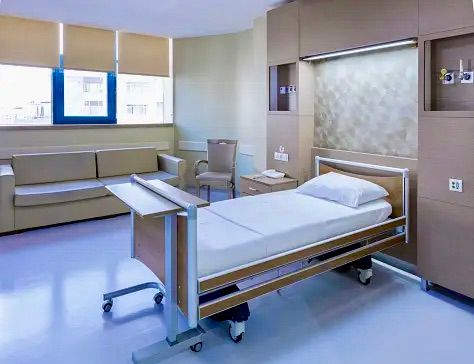In a cohort study published by Infection Control & Hospital Epidemiology, researchers investigated if staying in a hospital bed previously used by a patient with a healthcare-associated infection (HAI) raised the likelihood of acquiring a hospital-onset HAI. The study found that patients occupying a hospital bed or room after someone with Clostridioides difficile infection (CDI) had a higher risk of developing a hospital-onset C diff infection (HO-CDI). Enhancing cleaning and disinfection practices in healthcare settings could lower the transmission of C diff within hospitals.
Among 25,032 hospital visits involving 18,860 distinct patients, we detected 237 instances of HO-CDI. The association between exposure to a contaminated bed and the development of HO-CDI was evident in both unadjusted (odds ratio (OR), 1.8; 95%) (confidence interval (CI), 1.4–2.31) and adjusted analyses (OR, 1.5; 95% CI, 1.2–2.0). A significant portion of this association was attributed to the combined effects of mediation by and interaction with a contaminated hospital room.
“The odds of developing HO-CDI with exposure to a contaminated bed minimally increased in sensitivity analyses in which we decreased the amount of time a bed was considered contaminated, thus decreasing the time between the prior occupant’s positive C diff test and the subsequent occupant’s diagnosis of HO-CDI,” according to investigators. “The sustained association between contaminated bed and HO-CDI speaks to the robustness of C diff spores and their ability to survive on environmental surfaces for an extended period.”
Hospital bed movements within 2 academic medical centers were tracked from April 2018 to August 2019 using a real-time location system. Researchers extracted patient demographics, clinical details, and C diff PCR test results from electronic health records. A patient was considered exposed to a "contaminated" bed or room if they occupied a bed or room within 7 days before their diagnosis of HO-CDI, which previously hosted a patient with C diff infection within the last 90 days. The study utilized multivariable logistic regression to assess the association between exposure to contaminated beds and the incidence of HO-CDI, adjusting for the length of hospital stay and the need for intensive care, and analyzing the impact of room contamination.
3 Key Takeaways
- The study has revealed a significant association between occupying a hospital bed previously used by a patient with a CDI and an increased risk of developing a HO-CDI.
- The research findings emphasize the necessity for healthcare facilities to adopt and rigorously implement enhanced cleaning and disinfection protocols, specifically targeting the eradication of C diff spores from hospital beds and the surrounding environment.
- The study highlights the direct link between bed contamination and the risk of HO-CDI and points to the value of utilizing real-time monitoring systems in tracking hospital bed usage and contamination.
“Our findings suggest that there may be transmission of C diff from the hospital bed to a patient, even up to 90 days after the original patient was diagnosed with C diff further studies involving genomic sequencing could more directly link possible bed contamination and developing HO-CDI. Human-factor analyses could also elaborate on the interactions that healthcare personnel have with the hospital room, bed, and other surfaces to determine which parts of the healthcare environment contribute the most to the transmission of HO-CDI,” the investigators wrote. “New technologies or cleaning and disinfection methods that can better eradicate C diff spores from a hospital bed and/or the surrounding healthcare environment may lead to significant reductions in healthcare transmission of C diff and decrease rates of HO-CDI.”
The study identifies several limitations, including biases from specific hospital units and omitted beds, which do not significantly impact the overall findings. The use of PCR for C diff testing may overestimate bed contamination. Additionally, not considering clinical severity or asymptomatic cases might lower the estimated transmission risk. However, these limitations notwithstanding, the study underscores a nuanced relationship between bed contamination and HO-CDI risk, stressing the importance of improved infection control measures across both single and multi-bed hospital settings to mitigate C diff spread.
Overall, this study highlights insights into the transmission patterns of C diff within hospital settings and underscores the necessity for enhanced protocols for cleaning and disinfecting hospital beds, and the broader healthcare environment. Furthermore, the real-time monitoring of hospital beds could significantly contribute to investigating outbreaks of HO-CDI by uncovering links, such as shared beds among patients that might be overlooked by conventional epidemiological approaches.
Reference
Witt LS, Howard-Anderson J, Prakash-Asrani R, Overton E, Jacob JT. The role of the hospital bed in hospital-onset Clostridioides difficile: A retrospective study with mediation analysis. Infection Control & Hospital Epidemiology. Published December 13, 2024. Accessed February 6, 2024. doi:10.1017/ice.2023.254

